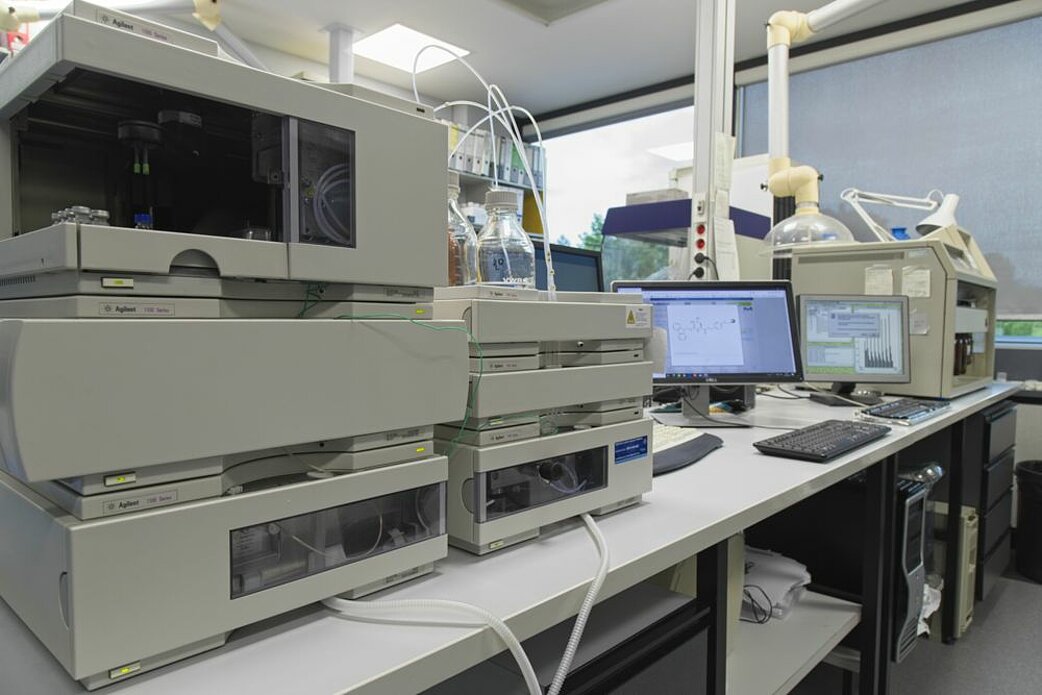
Peptide synthesis
Peptide synthesis
PLATEAU LEADER
The IGBMC peptide synthesis department has the capacity to handle custom synthesis requests, either from the institute's research groups or from external groups with the required authorisations.
Solid Phase Peptide Synthesis (SPPS), developed by Merrifield and used in our Laboratory, comprises 4 distinct steps:
- The synthesis itself;
- Cleavage of the peptide from the solid support and deprotection of the amino acid side chains;
- Purification of the crude peptide by reverse phase HPLC;
- Control and characterization of the finished product by HPLC and Mass Spectrometry.
It takes 4 to 5 working days to complete a peptide synthesis.
The chemistry used is based on the use of the 9-Fluorenylmethyloxycarbonyl (Fmoc) group for the protection of the α-NH2 function in combination with tertiary butyl and trityl groups for the protection of the secondary functions of the amino acids.
We have an Applied Biosystems 433A automatic peptide synthesiser. The production capacity is five peptides per week.
Peptides are supplied with an HPLC profile and mass spectrum attesting to their purity.
Some tips for peptide solubilisation and storage
Solubilisation
Most peptides dissolve easily in distilled water. In case of difficulties, use the vortex, you can also leave the tube in an ultrasonic bath for a few minutes.
If the peptide still does not dissolve, the PH of the solution must be modified, depending on the basic or acidic nature of the peptide:
- for a basic peptide, add a 10% acid solution (CH3COOH)
- for an acidic peptide, add a 10% basic solution (NH4OH)
In the case of neutral or strongly hydrophobic peptides, we have no choice but to add organic solvents such as DMSO, Acetonitrile, DMF.
Storage
To avoid loss of quality due to frequent thawing and refreezing, it is best to divide the solution into aliquots. These aliquots can be re-dried or dried and stored at -20°C, which guarantees optimal quality.
In any case, it should be noted that storage in freeze-dried form, protected from air and water, is far preferable to storage in solution, especially for peptides containing Trp, Met, Cys, Asn or Gln.
As peptides are mostly hygroscopic, the vial should be brought from -20°C to room temperature before opening. The absorption of water can significantly reduce the chemical stability of the product as well as its peptide content.
